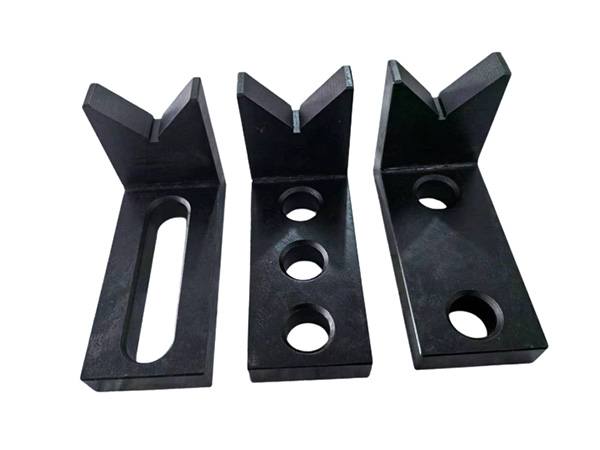- 网站导航 -
Address: Home > News > Technical documentation >
Development and Application of Flexible Welding Fixtures
Time:2024-09-18 05:57:15 Author:Fadetong Clicks:185Second-rate
In modern manufacturing, flexible welding fixtures have become crucial tools for enhancing production efficiency and product quality. Unlike traditional fixed welding fixtures, flexible welding fixtures adapt to different workpiece shapes and sizes, significantly improving production line flexibility and efficiency. This article explores the development process of flexible welding fixtures, their applications in various industries, and how they help businesses achieve automation and enhance market competitiveness.

Background of Flexible Welding Fixture Development
With the acceleration of manufacturing automation, more enterprises face the challenge of multi-variety, small-batch production. This production mode demands welding equipment with high adaptability and flexibility. While traditional fixed welding fixtures have advantages in mass production, they are less practical for diverse production needs, leading to frequent line changes, complex operations, and high costs. Consequently, flexible welding fixtures have emerged as a solution providing a flexible, efficient, and cost-effective welding approach.
Key Factors in Developing Flexible Welding Fixtures
1. Modular Design:
Core Concept: Modular design is fundamental to flexible welding fixtures. Adjustable components enable the fixture to quickly adapt to different workpiece requirements, reducing downtime. This design also simplifies maintenance and replacement, lowering equipment upkeep costs.
2. High-Precision Adjustment System:
Precision: Flexible welding fixtures are often equipped with high-precision adjustment systems, allowing operators to easily adjust the fixture’s angle and position, ensuring accurate workpiece positioning. This minimizes welding defects and enhances welding efficiency.
3. Advanced Material Application:
Materials: The development of flexible welding fixtures incorporates lightweight, high-strength materials such as aluminum alloys and composites, reducing the fixture’s weight while increasing durability and corrosion resistance, thereby extending its lifespan.
Applications of Flexible Welding Fixtures
Flexible welding fixtures are widely applicable across various industries, including automotive manufacturing, aerospace, and home appliance manufacturing. Their greatest advantage lies in their ability to adapt to different production processes, reducing workpiece changeover and equipment adjustment time.
1. Automotive Manufacturing:
Efficiency: In the automotive sector, flexible welding fixtures significantly enhance production line efficiency. As vehicle models evolve, manufacturers need to quickly adjust production lines to meet new model requirements. Flexible welding fixtures allow rapid adjustment and assembly, ensuring quick production line changes, reducing cycle times, and improving market responsiveness.
2. Aerospace:
Precision: The aerospace industry demands high welding precision, with varying workpiece sizes and shapes. Flexible welding fixtures provide precise adjustment and positioning, achieving high-precision welding tasks. Their lightweight design also reduces manual handling burdens, improving overall production efficiency.
3. Home Appliance Manufacturing:
Adaptability: In home appliance manufacturing, rapid product updates and diverse workpieces require production equipment with quick adjustment capabilities. Flexible welding fixtures, with reusable component designs, meet various appliance welding needs, reducing fixture changeover frequency and significantly lowering equipment procurement and maintenance costs.
Advantages of Flexible Welding Fixtures
1. High Flexibility and Wide Adaptability:
Comparison: Compared to traditional fixed fixtures, flexible welding fixtures excel in handling diverse production tasks. Through modular design and high-precision adjustments, operators can easily adapt to different workpiece specifications, greatly reducing changeover time and enhancing production line flexibility.
2. Increased Production Efficiency:
Efficiency: Flexible welding fixtures simplify adjustment processes, reducing operational complexity. Quick adjustments and efficient positioning not only enhance welding precision but also shorten welding times, significantly increasing production efficiency. They maintain high efficiency in multi-variety production modes, helping businesses stay competitive.
3. Cost Reduction:
Cost Benefits: Although initial investment in flexible welding fixtures may be higher than traditional fixtures, their long-term cost benefits are significant. Modular design reduces the need for frequent new fixture purchases, as adjustments or component replacements can accommodate production line changes. This effectively lowers overall equipment procurement and maintenance costs.
4. High Precision and Reliability:
Precision and Reliability: Flexible welding fixtures provide stable workpiece positioning and welding precision. Regardless of the workpiece complexity, precise adjustments ensure stable welding quality, reducing defects and rework rates, thus enhancing production line reliability.
Why Choose Our Flexible Welding Fixtures?
We are dedicated to providing efficient, flexible, and cost-effective welding solutions for manufacturing enterprises. Our flexible welding fixtures feature the latest modular design and advanced materials, adapting to diverse production needs. Through partnerships with leading global manufacturers, our products ensure excellent performance in various application scenarios, supporting businesses in enhancing production efficiency and product quality.
Choosing us means you will benefit from:
Customized Design Services: Tailor-made flexible welding fixtures to meet specific production requirements.
High Precision and Durability: Advanced technology and materials ensure accuracy and long-term durability.
Fast Delivery and Support: A comprehensive supply chain system ensures quick product delivery, along with 24/7 technical support.
Contact us today to learn more about the development and application of flexible welding fixtures. Let us assist you in achieving intelligent manufacturing and enhancing market competitiveness.











